Find foods that heal & meal ideas for the week to fuel your body with nutrient-dense foods, improve overall health, and feel your best while eating budget-friendly recipes you’ll love!
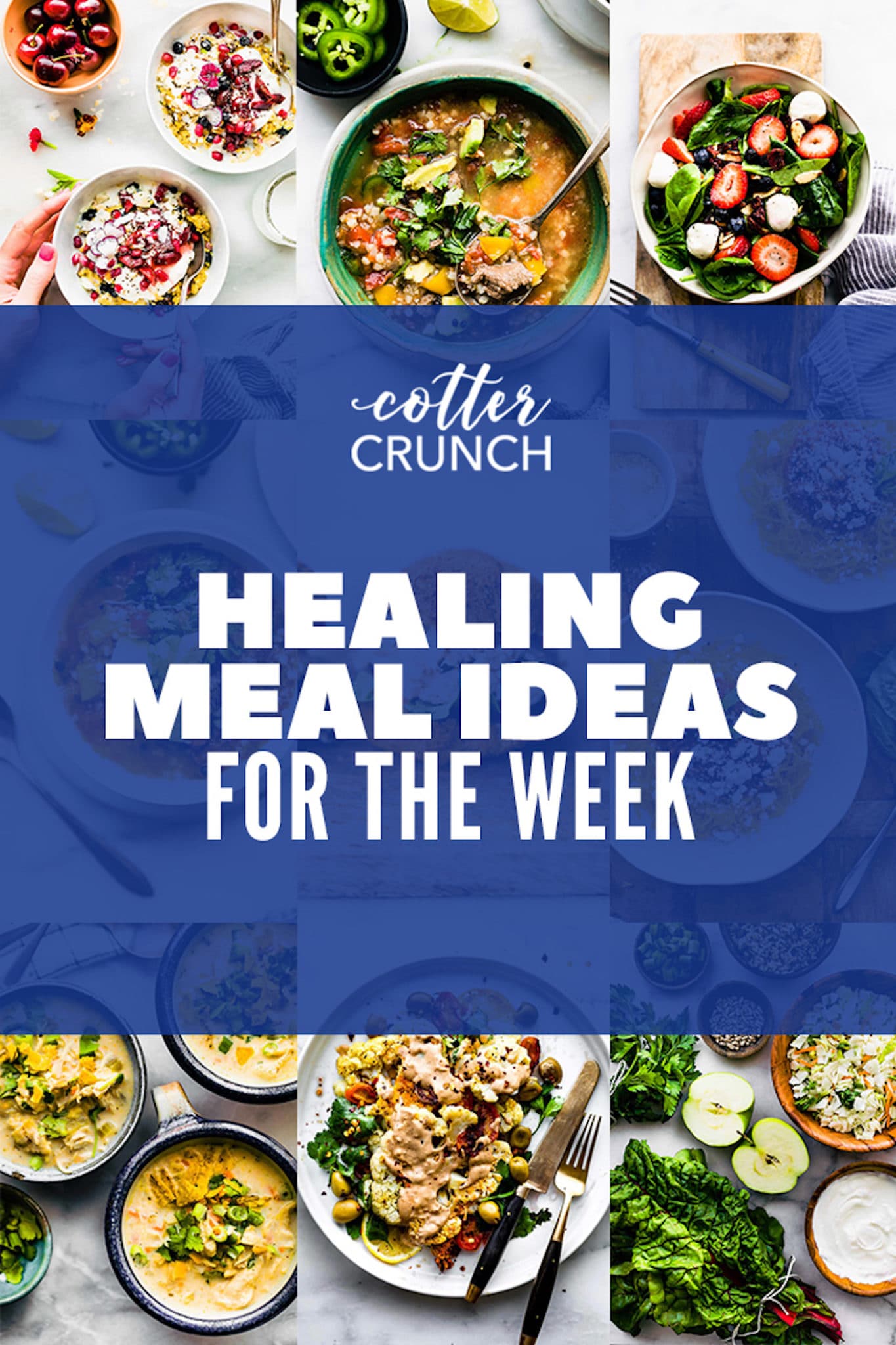
The 3rd and last installment of our Healing week and Restorative Health Series, these foods that heal & meal ideas for the week are loaded with nutrient-rich foods and gut-friendly ingredients to help fight inflammation and nourish the body from the inside out.
Healthy, Healing, Whole…Foods, That Is!
If you’ve been following along the last month, I hope you’ve found the recipes we’ve shared helpful in your healing journey. We know that trial and error with foods that comes with healing health conditions can be hard. However, our goal is to help make the process easier by providing you with nutritional information and nourishing recipes you’ll actually want to eat.
This being said, we decided to wrap up our Restorative series by providing you with a breakdown of specialty diets, a complete list of foods that heal, and meal ideas for the week so you can continue to optimize your health and include nutrient-rich foods in your everyday meal plans long after this series is over!
What are Foods that Heal?
Specific foods that heal look a little different for everyone, depending on their individual needs. However, to me, foods that heal are whole foods that come naturally from the earth and add to our overall health and sense of wellbeing. Unlike highly processed foods that are made with chemicals and added sugars, these foods are rich in vitamins and nutrients and work to heal our bodies from the inside out by reducing inflammation, boosting immunity, and more.
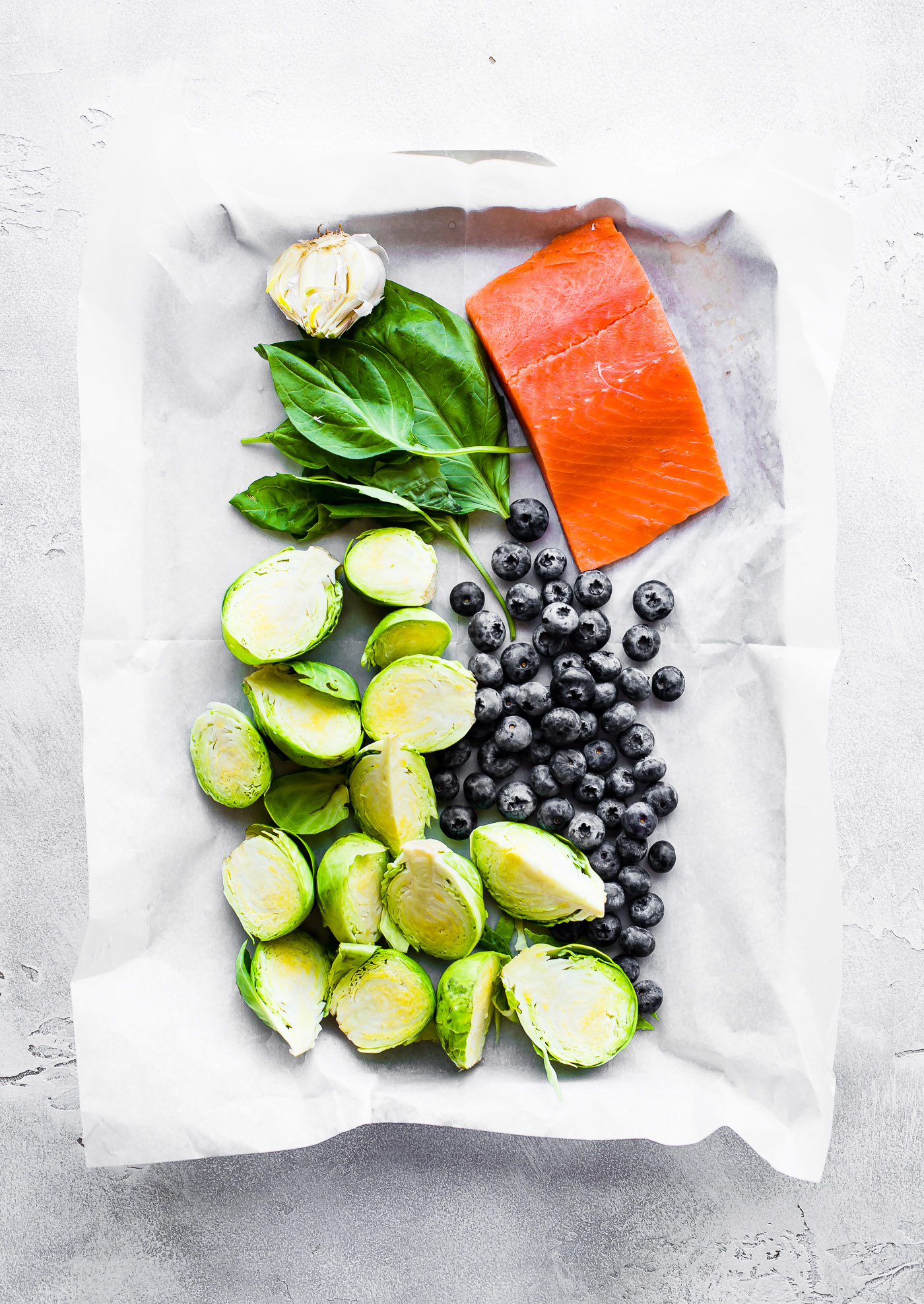
Of course, there is no such thing as good or bad foods, but I think we can all agree that some choices are better for us than others, especially when it comes to managing specific health conditions. For instance, anti-inflammatory options can be hugely beneficial in managing chronic conditions. Meanwhile, whole food plant based recipes can be useful for those looking to improve gut health or increase their nutrient intake. Basically, what I’m saying is that healing foods encompass a wide variety of items and eating patterns, but in general include whole foods full of vitamins, nutrients, and fiber!
Nutrition Note on Healing: These meal ideas for the week are meant to be a useful resource to help you optimize and improve your health. However, you know your body best! The truth is, healing foods look a little different for everyone, and what works for one person might not work for you. So, feel free to pick and choose what works for you and your needs!
Naturally Healing Foods + Lifestyle Diets
Including nutrient-rich foods in your diet can provide a virtually endless list of benefits dependent on factors such as pre-existing health conditions and the specific foods consumed. However, in general including improved digestion, reduced inflammation, boosted immunity, better skin, reduced aches and pains, and more!
Diet Types
Of course, as mentioned, you know your body best and should definitely consult with your doctor if you have specific concerns or plan to alter your diet in any major way. However, the diet types listed below have been tried and tested by many who have found them beneficial in the journey to improve their health. Take a look at the various diet types below, find common foods included, and more to find out if they might be a good fit for you!
Important Note: The lists below are meant to be an example of foods consumed and are not fully extensive.
Whole30
The Whole30 diet was originally intended to be a 30-day diet reset to discover what foods you may have adverse reactions to and to help those implementing the diet to recover from excessive consumption of processed food and sugars. To do this, the diet involves the process of eliminating specific foods and food groups for a period of time. For more details and a complete list, read more here. However, basic foods included in the diet are:
- Vegetables – leafy greens, tubers, zucchini, tomatoes, broccoli, bell pepper, etc.
- Fruits – apples, cherries, oranges, pineapple, bananas, berries, etc.
- Protein – eggs, beef, turkey, chicken, fish
- Nuts and Seeds – almonds, walnuts, flaxseeds, pumpkin seeds, chia seeds
- Oils – avocado oil, olive oil, sesame oil, coconut oil, ghee
Foods Not Included:
- Added Sugar (and even some natural sources, gasp!) – maple syrup, honey, agave, stevia, monk fruit, sugar, Splenda, etc.
- Grains (even gluten free) – wheat, rye, barley, oats, rice, millet, quinoa, buckwheat
- Legumes – chickpeas, lentils, peanuts, edamame
- Commercial Dairy – milk, cream, cheese, yogurt, ice cream
- Specific Additives – carrageenan, MSG, sulfites
- Baked Goods – cakes, cookies, brownies
AIP
The anti-inflammatory diet is an elimination diet that aims to reduce or prevent chronic inflammation and related symptoms such as aches and pains, allergies, autoimmune conditions, cardiovascular disease, diabetes, and respiratory issues by focusing on consuming whole, nutrient-dense foods. Below are sample lists of common foods included in the diet as well as those commonly excluded. However, for more complete resources and guides take a look here.
Foods to Include:
- Vegetables: a wide variety, excluding nightshade vegetables
- Fruit: a wide variety, preferably fresh
- Tubers: sweet potatoes, taro, yams
- Minimally Processed Meats: wild game, fish, seafood, organ meat, and chicken (grass-fed or pasture-raised when possible)
- Fermented Foods: kombucha, kimchi, sauerkraut, pickles
- Cold Pressed and/or Naturally Refined Vegetable Oils: olive oil, avocado oil, coconut oil
- Herbs and Spices: not derived from seeds and nightshade free spices
- Vinegars: balsamic, apple cider, red wine vinegar free from added sugars
- Natural Sweeteners: honey and maple syrup
- Teas: green and black
- Bone Broth: chicken and beef
Foods Not Included:
- Commercial Dairy: milk, yogurt, cheese, etc.
- Food Additives: nitrates, emulsifiers, preservatives
- Gluten: regular bread, pasta
- Grains: rice, wheat, oats, barley
- Nuts and Seeds: almonds, cashews, sunflower seeds, etc. (including all foods derived from them such as nut butters, flours, and oils) as well as seed-based spices such as coriander, cumin, fennel, mustard, and nutmeg
- Legumes: lentils, beans, peanuts
- Nightshade Vegetables: tomatoes, peppers, potatoes, and eggplant, etc.
- Oils: (PUFA)-rich industrial vegetable oils such as canola, soybean, peanut, sunflower, and corn oil, plus sesame oil due to it being a seed.
- Added Sugars and Sweeteners: brown rice syrup, high fructose corn syrup, barley malt syrup
- Coffee: regular and decaf
- All Alcohol: wine, beer, liquor
Low FODMAP
FODMAP foods are different groups of carbohydrates known for causing digestive distress. They’re found in a wide variety of foods to varying degrees. As a result, different foods are classified as being either high or low on the FODMAP scale depending on the degree at which these different carbs are found within them. Take a look at the brief overview below, and keep reading here to find a full breakdown of the diet.
Foods to Include:
- Eggs
- Meat
- Some Low-Lactose Cheeses – Brie, Camembert, cheddar, feta
- Lactose-Free Milk, Almond Milk (in small amounts) or Rice Milk Grains – rice, quinoa, gluten free rolled oats
- Some VegetablesS – eggplants, potatoes, tomatoes, cucumbers, zucchini
- Some Fruits – grapes, oranges, strawberries, blueberries, pineapple
Foods Not Included:
- Commercial Dairy – milk, yogurt, ice cream
- Gluten – bread, pasta, crackers
- Beans and Lentils – black beans, chickpeas, lentils
- Some Vegetables – onions, artichokes, asparagus, garlic
- Some Fruits (Stone Fruit in Particular) – apples, cherries, pears, peaches
Anti-Inflammatory
An anti-inflammatory diet is one full of nutrient-rich, whole foods full of fiber, antioxidants, and omegas with the intent to reduce inflammation within the body. For a more in-depth look at the diet and foods included, keep reading here.
Basic Foods to Include:
- Fruits
- Vegetables
- Properly Prepared (Soaked Before Cooking) Whole Grains and Legumes
- Herbs and Spices
- Monounsaturated and Polyunsaturated Fats
Basic Foods to Limit
- Overly Processed Foods and Fried Foods
- Refined Carbs
- Foods High in Saturated Fat
- Large Amounts of Alcohol
- Commercial Dairy
- (PUFA)-Rich Industrial Oils (peanut oil, soybean oil, canola oil, safflower oil).
Meal Examples
For easy meal planning, take a look at these dinner recipes for each diet type to add to your weekly meal plans!
Whole30
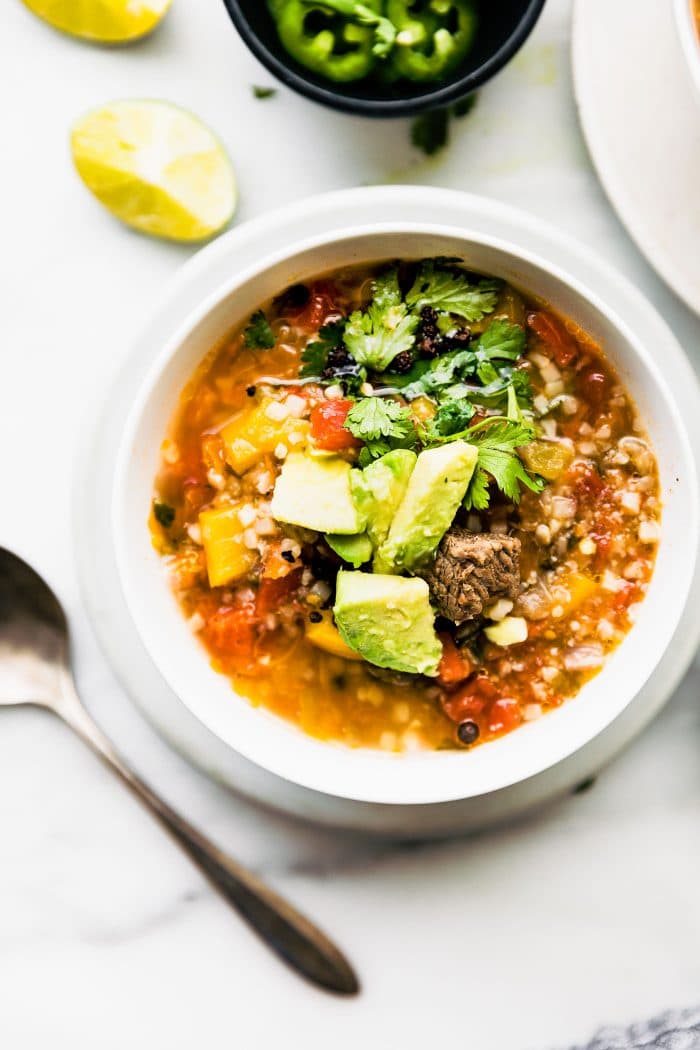
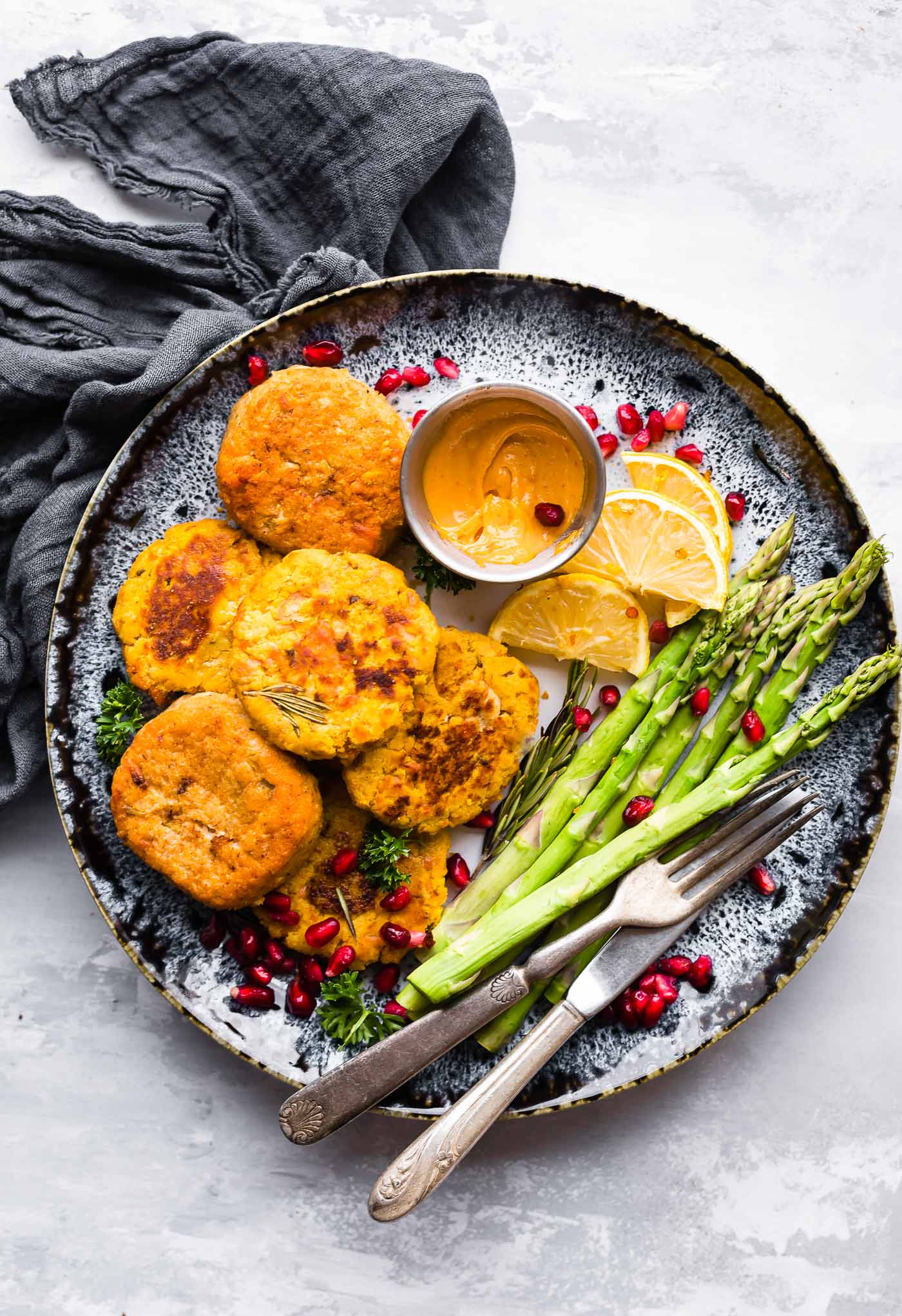
Low FODMAP
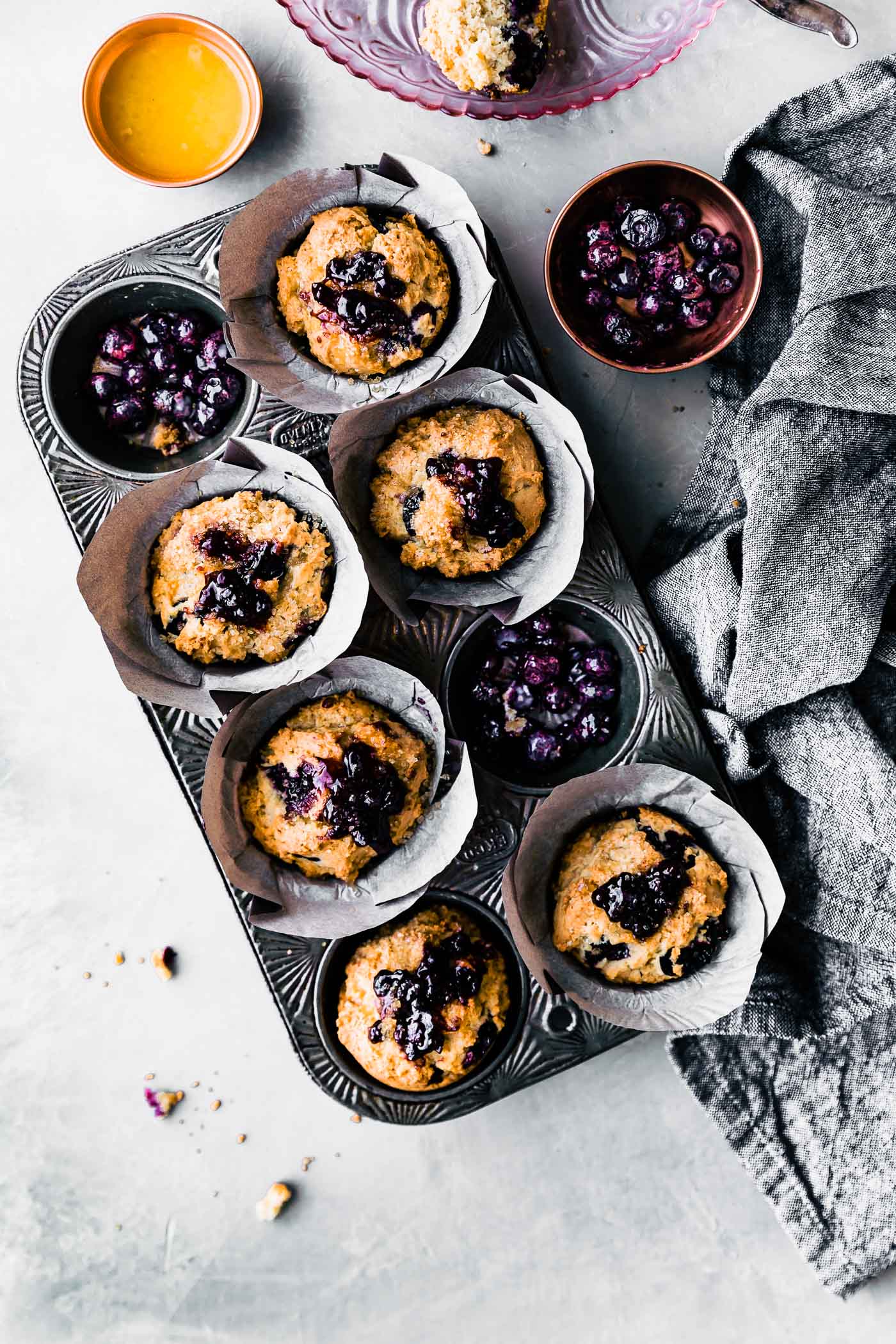
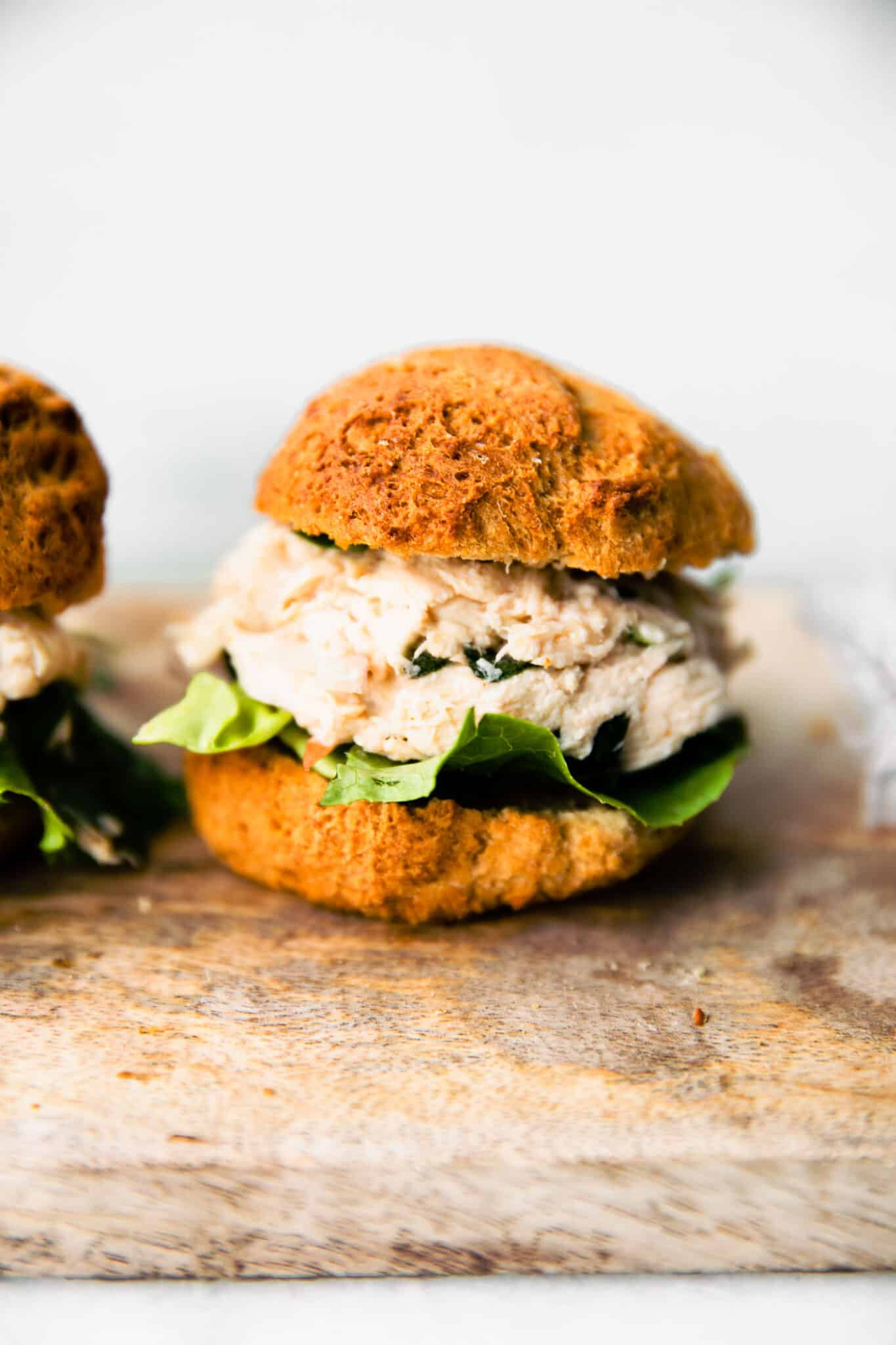
- Low Fodmap Blueberry Muffins
- Chicken Salad in lettuce wraps, on whole grain gluten free bread, or mixed in with quinoa
AIP Friendly Recipes
Be sure to read recipe notes for the AIP substitutes.
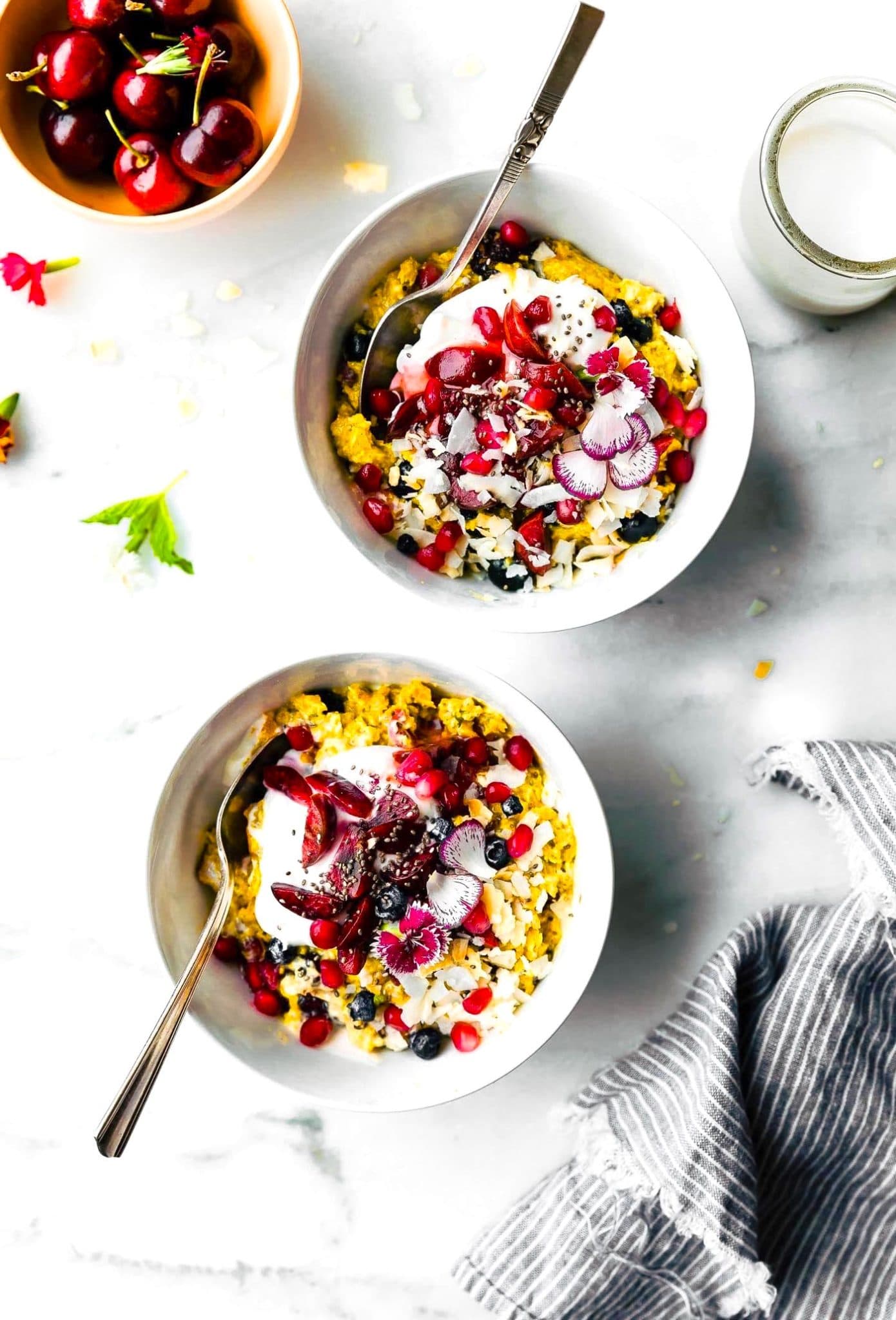
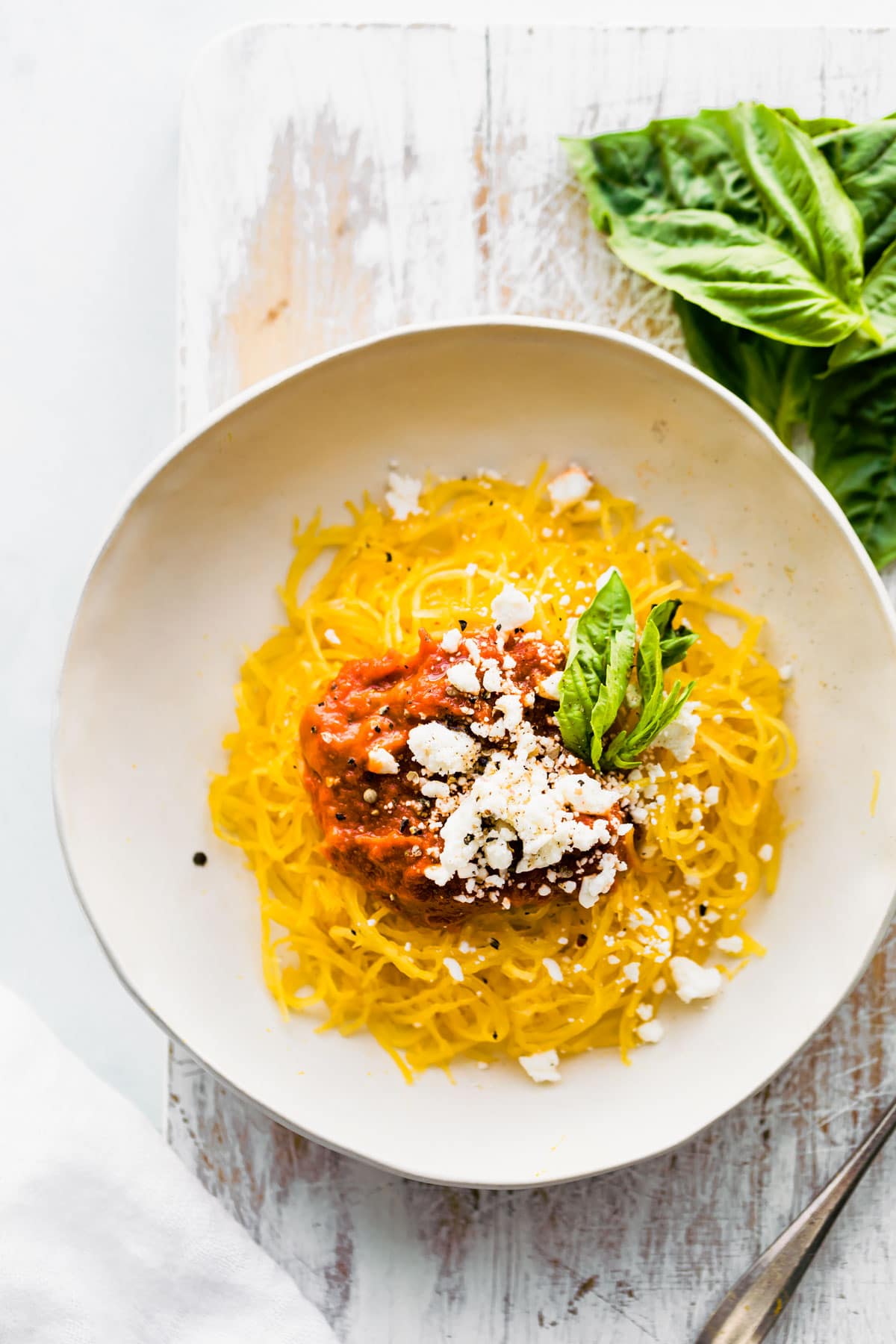
Anti-Inflammatory
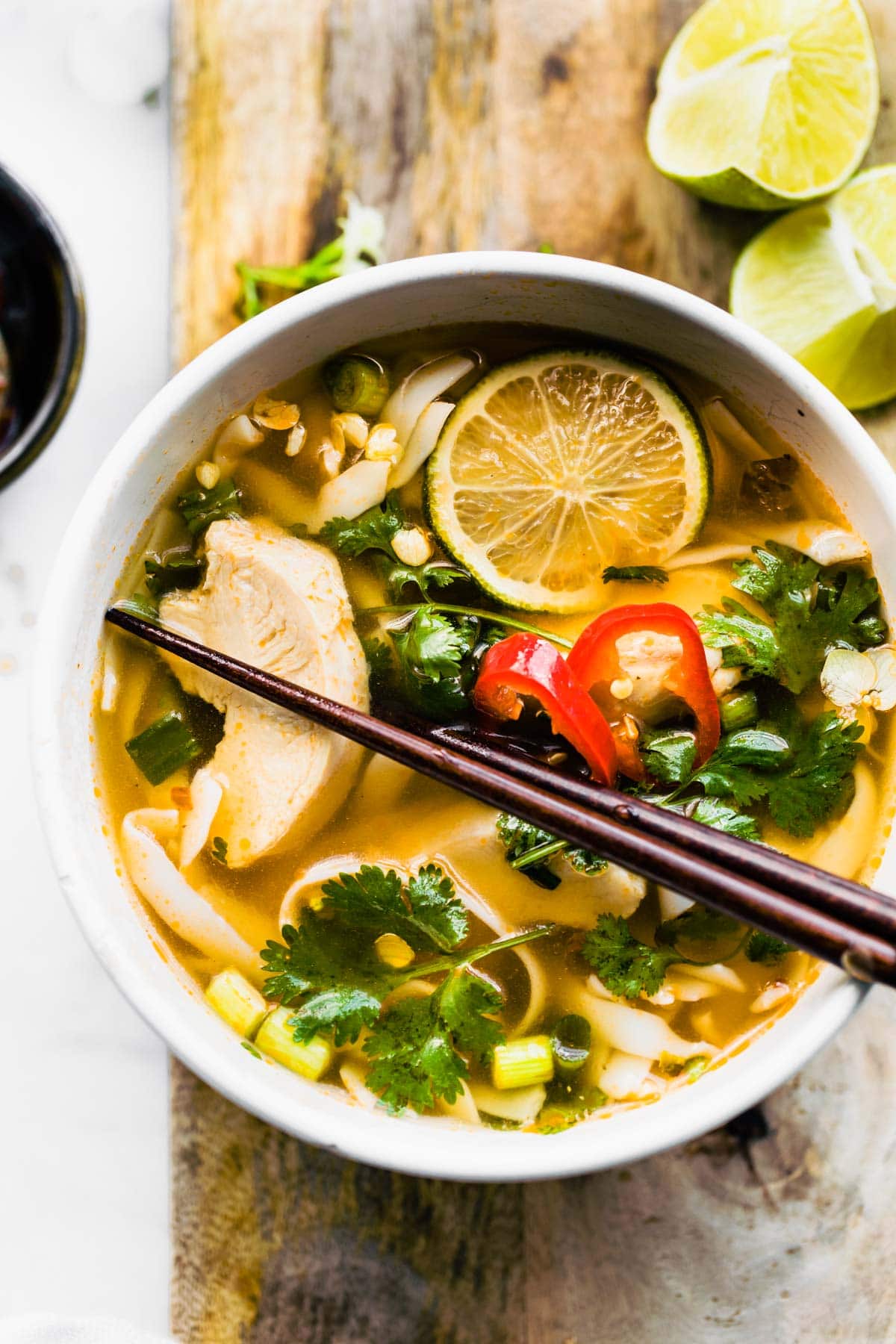
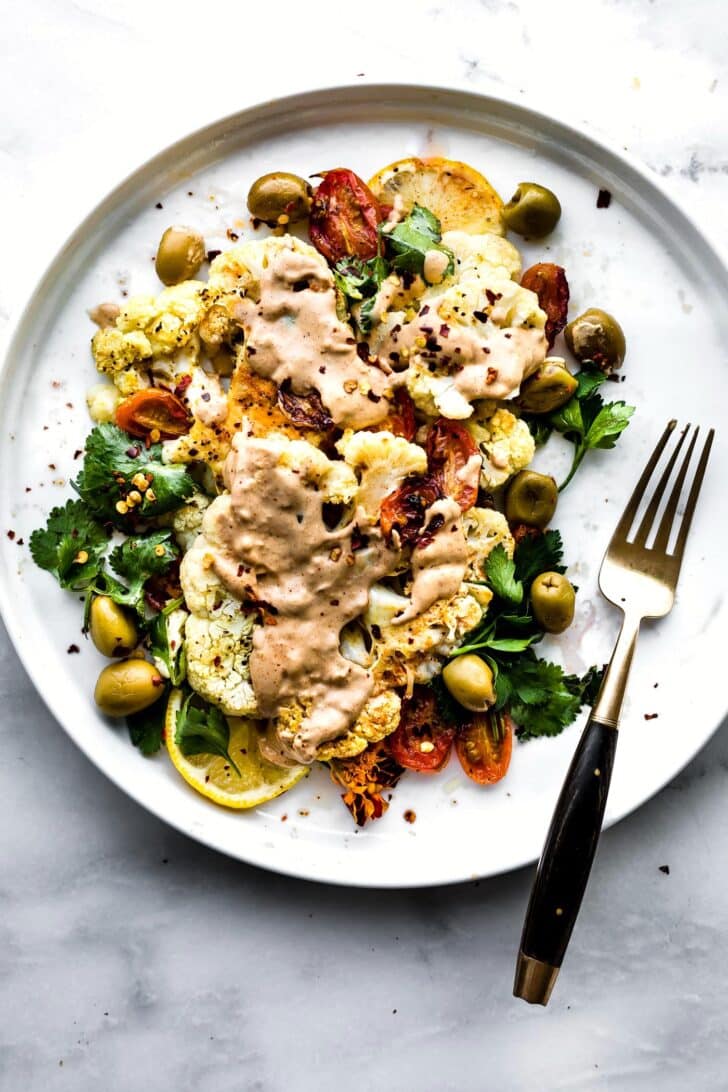
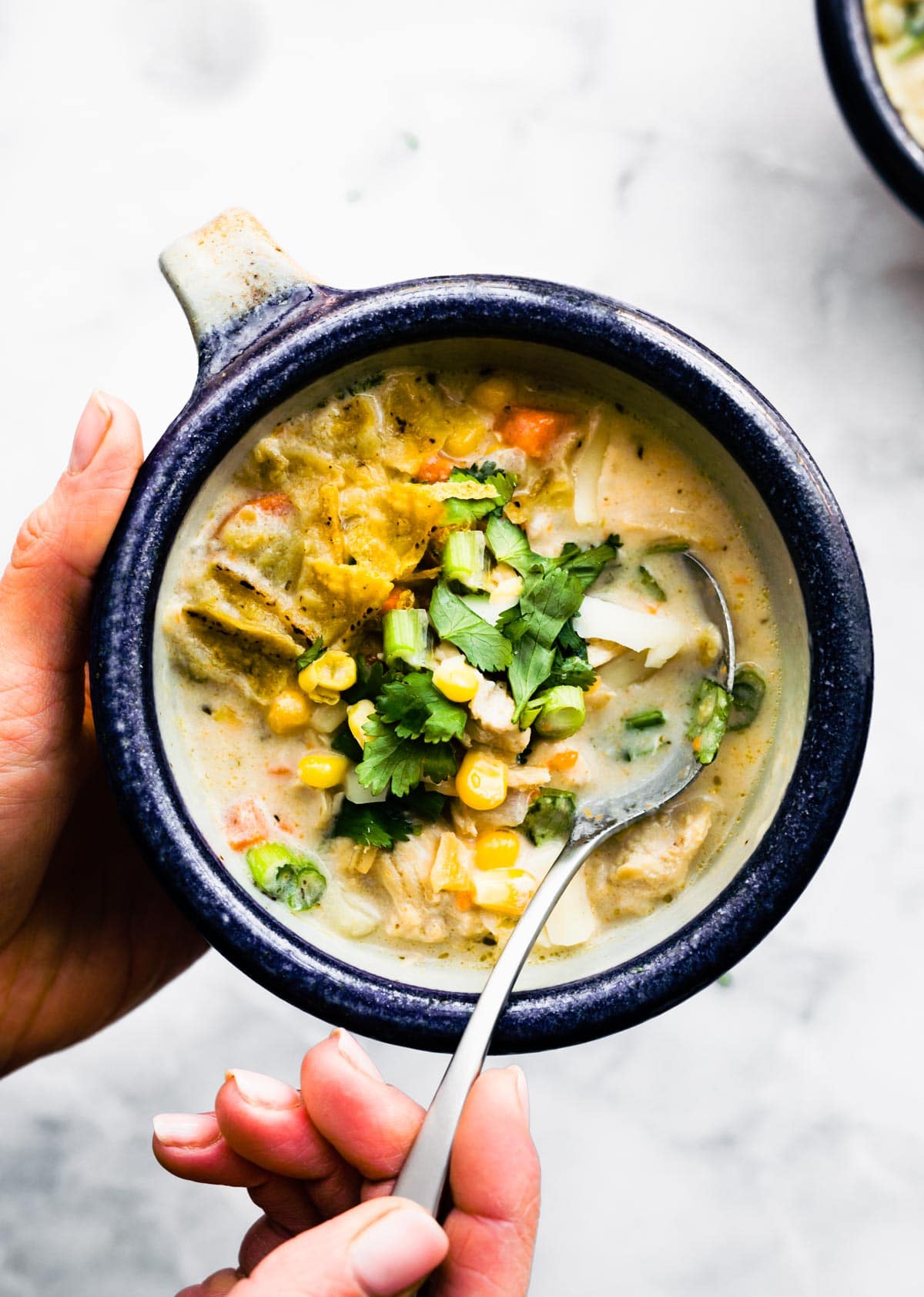
- Thai Chicken Soup
- Roasted Cauliflower Steaks with Paprika Cream (Vegan)
- Instant Pot White Chicken Chili (Nightshade Free + Stove Top Option) –
- Note: This recipe is nightshade free but does contain cumin. For an AIP-friendly option, try replacing it with ground coriander or white pepper.
Grocery List
The foods listed below are the basic ingredients required to make all of the recipes listed above. For easy shopping, be sure to download the printable pdf below!
How to Implement Nutrient Rich Foods Every Day
Hopefully, these meal ideas for the week can help you incorporate more nutrient-rich foods into your days. However, there are easy tips and tricks to incorporate more foods that heal with ease! For example:
- Swap out processed sauces for natural herbs and spices to add flavor to meals
- Replace margarine vegetable oils with refined oils such as avocado or coconut oil.
- Boost protein and improve gut health by adding collagen peptides into recipes like soup, smoothies, gluten free oatmeal, and more.
If you try any of these foods that heal or meal ideas, I would love it if you let me know in the comments below! Also, feel free to reach out with any additional questions you might have! I’m always happy to help!
Cheers,
LC
This roundup, originally published in 2017, has been updated to provide you with better content and new and/or improved recipes! If you can’t find something you’re looking for, let us know, and we’ll be happy to help!
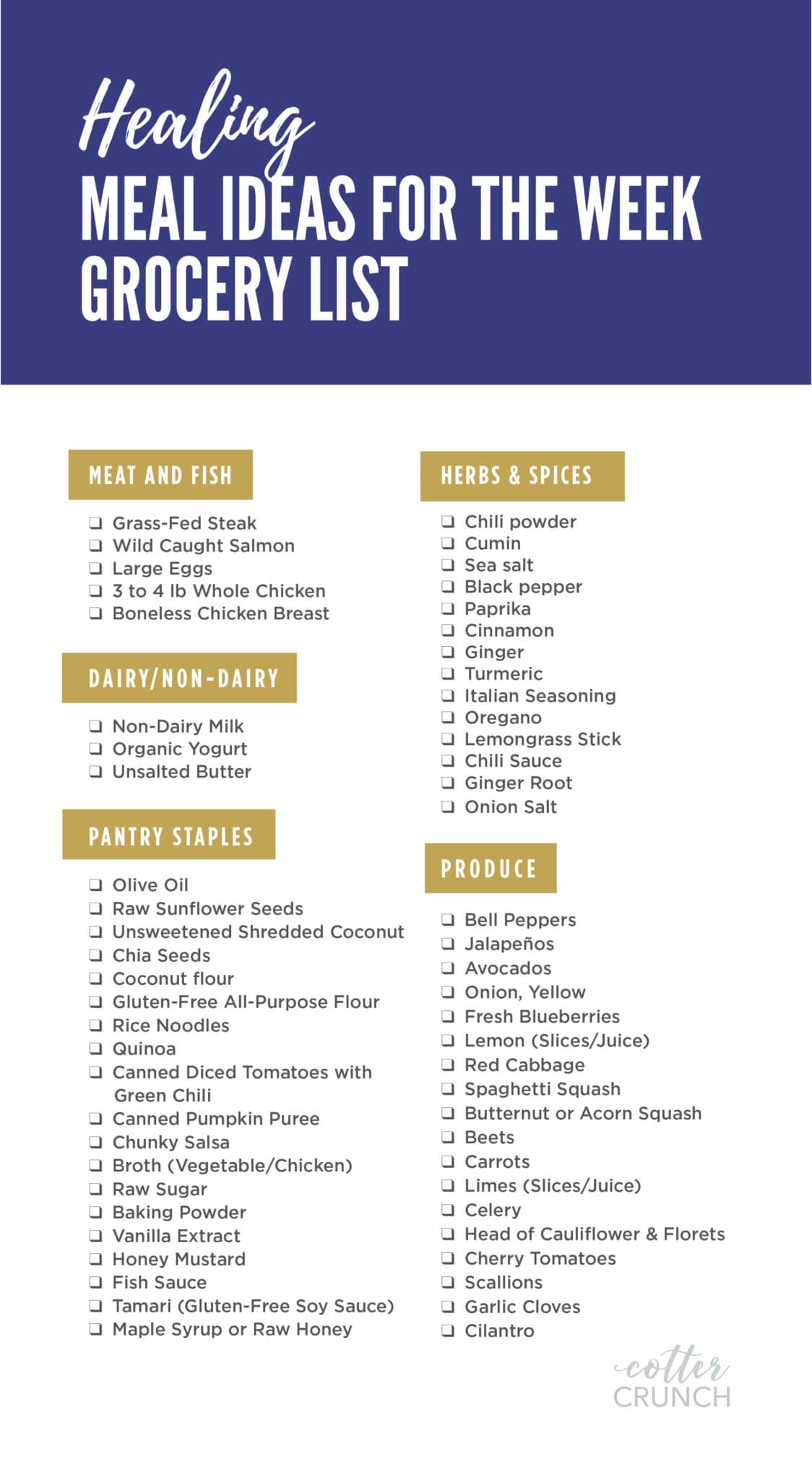
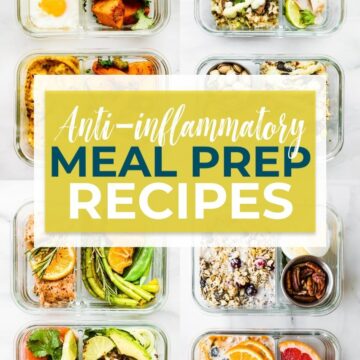
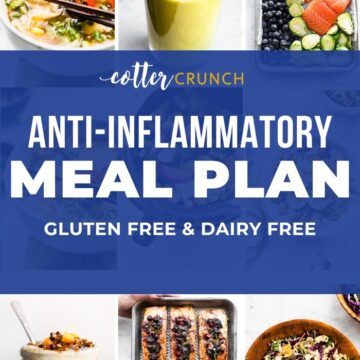
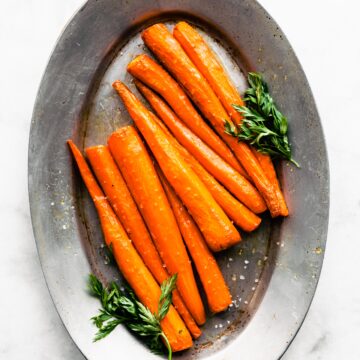
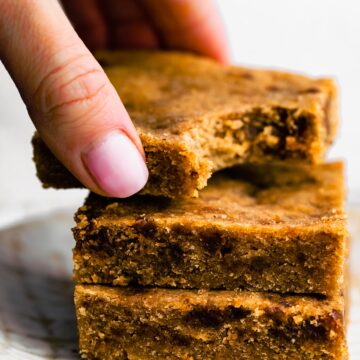

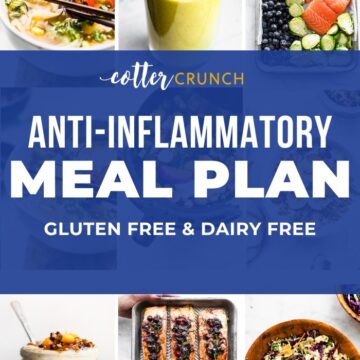
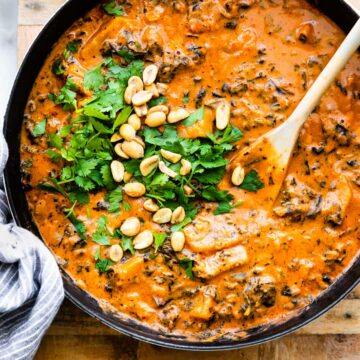
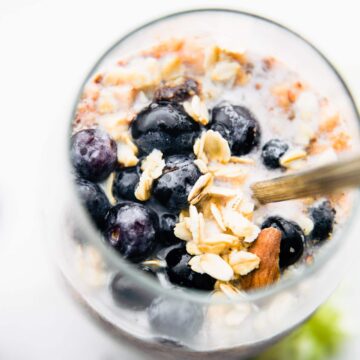
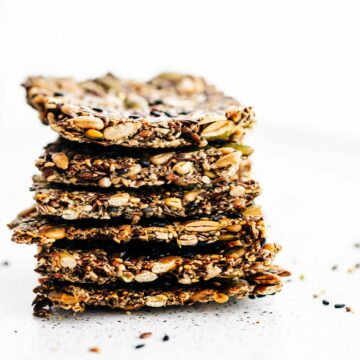
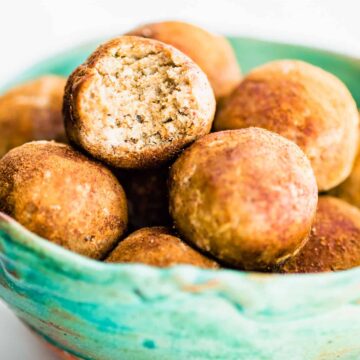
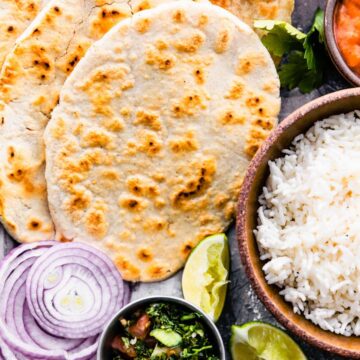
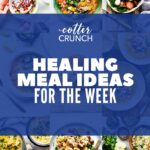
Hello. How do I purchase the Healing Recipes Meal Plan Cookbook. Thank you for this wonderful site. It’s so full of great information.
HI! I was hoping you can tell me the best option to use for Gluten, dairy, and nut allergies. I struggle to find things to eat! I do not eat much for meat/fish. I do love beans. Help!
Thanks!
DAY ONE FOR ME- I have been sick for months now, my body seems to be rejecting everything I love- CARBS & DAIRY 🙁 🙁 🙁 My doctor suggested an anti-inflammatory meal plan through process of elimination to see what my body can now tolerate. . . so here it goes Cotter Crunch- everything you have on this website makes it feel like this lifestyle change of mine is going to be alot smoother than I expected and these recipes look yummy!
wish me luck!
Let me know how I can help Callie! YOu got this!
Some beautiful recipes, it makes AIP and other restrictive diets look doable!! Pinning!
Thank you! Yes, totally easy AIP recipes that are tasty. YAY!
OMG, all of these recipes look amazing! I really want to try the salted caramel date shake, snap pea crisps, grain free naan bread, spiralized squash salad, sweet potato breakfast bowl, and the fig bowl!
You will love the fig bowl!
Excellent article and beautiful food photography, thank you for sharing!!
Thank you Samantha! That means a lot.
So many good healing ideas! That spiralized squash bowl with the figs is calling me right now!
Love this so much. So helpful for those trying to figure out what’s going on!
Thanks for letting me use your soup Lexi!